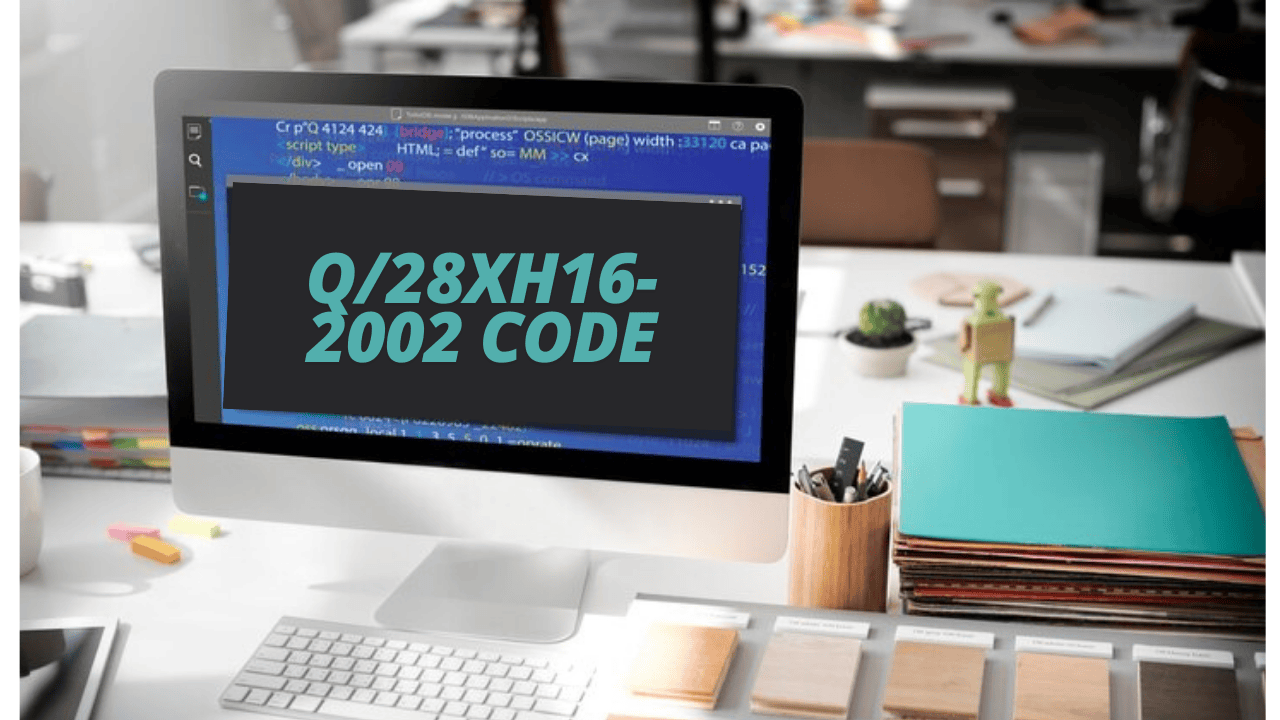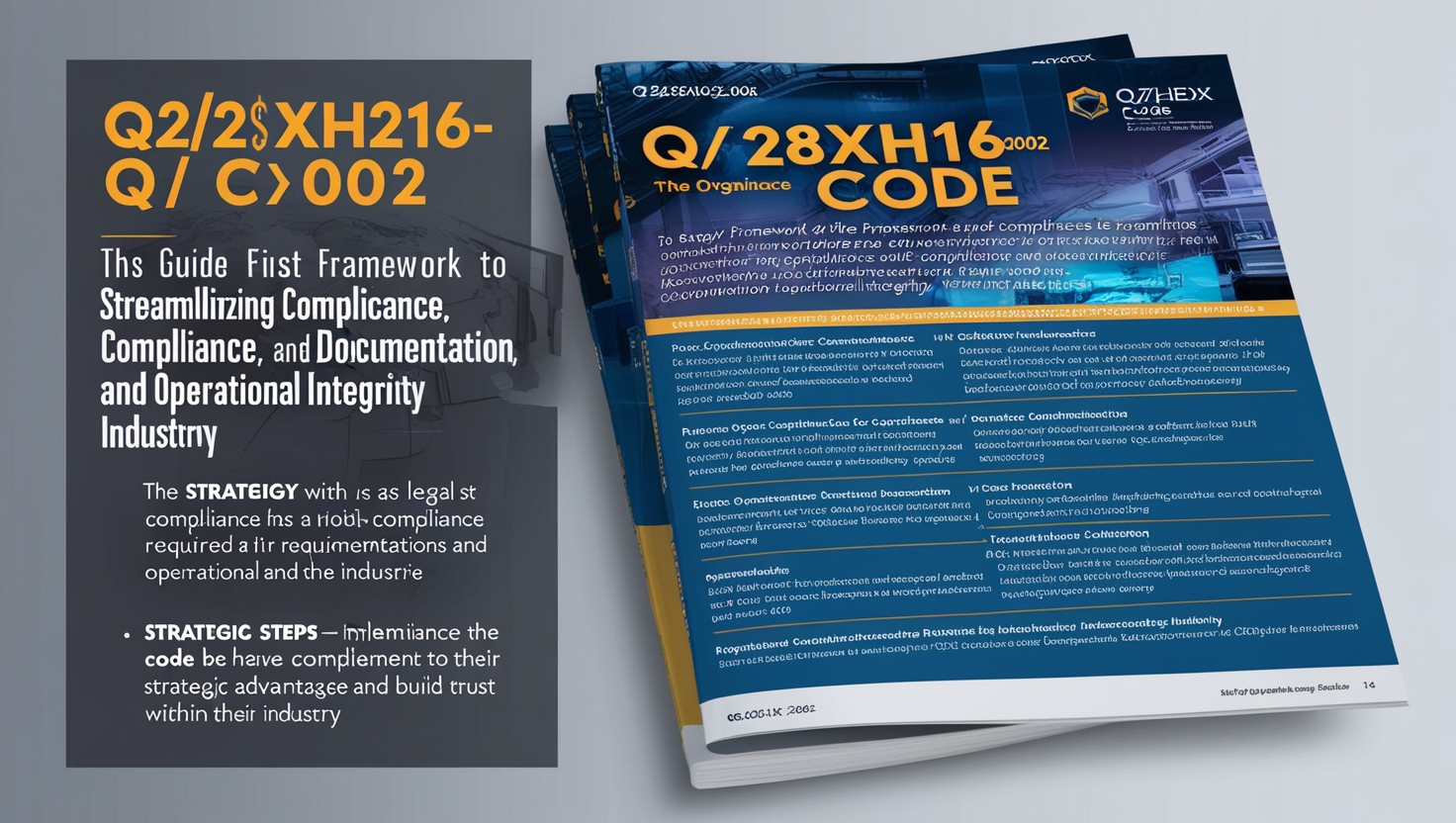Tech
Q/28XH16-2002 Code and Its Compliance Standards
Published
10 months agoon
By
Amolia
In today’s complex regulatory landscape, the Q/28XH16-2002 code represents a robust framework designed to streamline compliance, documentation, and operational integrity for organizations across various industries. This guide explores every aspect of this code, from its purpose and applicability to the strategic steps required for effective implementation. Compliance with the Q/28XH16-2002 code is more than just a legal requirement—it’s a strategic advantage for businesses aiming to improve their operational standards and build trust within their industry.
What Is the Q/28XH16-2002 Code?
The Q/28XH16-2002 code is a set of regulatory standards developed to enforce consistency, accountability, and safety across numerous industries. It outlines requirements that ensure businesses manage their documentation, operations, and compliance activities in a structured, transparent manner. By adhering to this code, organizations can mitigate operational risks, ensure regulatory compliance, and boost their credibility.
The code applies to key areas including documentation standards, operational safety, environmental responsibility, and quality management. This comprehensive approach aids organizations in maintaining quality across their procedures, reducing risks, and meeting government and industry standards.
Why Is the Q/28XH16-2002 Code Important?
Q/28XH16-2002 is essential because it sets a benchmark for organizational practices, emphasizing the importance of rigorous compliance and quality documentation. Compliance with this code can benefit organizations in multiple ways, such as:
- Enhancing Organizational Credibility: Adhering to regulatory standards showcases a commitment to quality and integrity, building trust with clients, partners, and regulatory bodies.
- Reducing Operational Risks: By following prescribed practices, organizations can identify and mitigate risks, thereby protecting their operations and reputations.
- Improving Efficiency and Consistency: A clear framework simplifies operations, enabling all departments to follow the same guidelines and reduce redundancies.
In a world where companies are increasingly held accountable for both internal and external practices, meeting the Q/28XH16-2002 standards can serve as a differentiator, setting compliant organizations apart from competitors.
Areas Governed by the Q/28XH16-2002 Code

The Q/28XH16-2002 code applies to several critical areas within an organization’s operational structure. Some of the main domains it covers include:
- Documentation and Record-Keeping: Proper documentation is vital for maintaining an auditable trail of actions, decisions, and safety protocols.
- Quality Management: The code outlines measures to ensure that organizations deliver consistent quality in their products or services.
- Safety Standards and Risk Management: Establishes protocols to prevent workplace accidents, ensure employee safety, and manage potential risks.
- Environmental Impact Assessments: The code mandates the evaluation of environmental impacts, promoting sustainable business practices.
Each area requires companies to adopt industry best practices, demonstrating their commitment to compliance and operational integrity.
Documentation Standards Under Q/28XH16-2002 Code
Proper documentation is one of the cornerstones of the Q/28XH16-2002 code. Detailed, organized records not only ensure compliance but also provide a basis for internal audits, future assessments, and regulatory inspections. Key documents to maintain include:
- Compliance Reports: Detailed reports that demonstrate adherence to all regulatory standards and identify areas for improvement.
- Audit Logs: Records of internal audits to show consistent monitoring of operational standards.
- Safety Assessment Records: Documents that outline risk mitigation efforts, safety protocols, and incident response plans.
- Training Documentation: Records of employee training sessions, demonstrating that all staff are informed about compliance standards and operational protocols.
Ensuring that these records are up-to-date and accurate is crucial for maintaining compliance and providing evidence of adherence to Q/28XH16-2002 requirements.
Steps for Implementing Q/28XH16-2002 Code in an Organization
Implementing the Q/28XH16-2002 code within an organization requires a thoughtful approach to change management, process integration, and employee training. Here are some effective steps for incorporating this code into your organization’s operations:
- Conduct a Compliance Assessment: Begin by evaluating your current practices against the Q/28XH16-2002 requirements. Identify areas of compliance and those needing improvement.
- Develop a Compliance Action Plan: Based on the assessment, create a step-by-step plan for aligning your operations with the code, detailing each task, responsible party, and timeline.
- Implement Documentation Protocols: Ensure that all necessary documentation templates, databases, and logs are in place. Standardize documentation practices to make it easy for staff to comply.
- Train Employees: Organize training sessions to familiarize employees with the code’s requirements. Make sure they understand the importance of compliance and how to properly document their work.
- Set Up Regular Audits: Schedule periodic audits to check adherence to Q/28XH16-2002 and identify areas that may need adjustments.
Benefits of Complying with the Q/28XH16-2002 Code
Compliance with Q/28XH16-2002 offers a range of benefits that extend beyond simply meeting regulatory standards. These include:
- Enhanced Risk Management: With a structured approach to compliance, organizations can proactively address operational and regulatory risks.
- Improved Operational Consistency: Adherence to a single standard promotes uniformity across departments, enhancing collaboration and reducing miscommunication.
- Reputation and Trust: Compliance boosts an organization’s reputation by showcasing its dedication to quality and safety.
- Cost Savings Over Time: Proactive compliance often prevents costly legal issues and penalties, ultimately saving money.
Challenges in Implementing Q/28XH16-2002 Code
For some organizations, implementing the Q/28XH16-2002 code can pose certain challenges, particularly if they are unfamiliar with rigorous regulatory requirements. Common challenges include:
- Initial Resource Investment: Setting up compliance systems can require upfront investment in resources, time, and training.
- Employee Resistance: Employees may initially resist the additional documentation or procedural changes, viewing them as burdensome.
- Updating Legacy Systems: Older systems or practices may need updates to align with the code’s requirements, which can be time-consuming.
These challenges can be addressed by involving employees in the process, demonstrating the long-term benefits, and providing adequate training and support.
Tips for Streamlined Q/28XH16-2002 Code Compliance
Successfully implementing the Q/28XH16-2002 code is achievable by adopting practical strategies that reduce complexity and enhance compliance. Key strategies include:
- Use Compliance Management Software: Implement software solutions to streamline documentation, track compliance activities, and automate reminders for audits or updates.
- Create a Compliance Culture: Foster an organization-wide culture that values compliance by integrating it into daily operations and rewarding adherence.
- Delegate Compliance Roles: Assign specific roles to oversee Q/28XH16-2002 compliance, such as compliance officers, who can provide ongoing guidance and ensure adherence.
- Continuous Monitoring and Improvement: Establish mechanisms for monitoring compliance on an ongoing basis and make improvements where necessary.
The Role of Q/28XH16-2002 Code in Environmental Sustainability
In addition to focusing on operational safety and documentation, the Q/28XH16-2002 code encourages sustainable practices by mandating environmental impact assessments. These assessments help organizations gauge their environmental footprint and adopt measures to reduce their impact on natural resources.
Compliance with the Q/28XH16-2002 code positions organizations as environmentally responsible entities, which is increasingly important in today’s market. Environmental considerations not only appeal to customers but also align with global sustainability initiatives, supporting the transition to a greener economy.
Q/28XH16-2002 Code Compliance Checklist
Maintaining compliance with the Q/28XH16-2002 code can be simplified by using a checklist. Key items to include are:
- Documentation Accuracy: Ensure all required documentation is accurate, accessible, and up-to-date.
- Regular Audits: Schedule and document audits to verify adherence to code standards.
- Safety Protocol Compliance: Check that safety assessments and protocols are consistently followed.
- Environmental Monitoring: Conduct regular assessments of environmental impacts and implement sustainable practices.
- Employee Training Records: Maintain records of training sessions to verify that all staff are informed and compliant.
Future Outlook for Q/28XH16-2002 Code Compliance
As industries evolve, regulatory codes like Q/28XH16-2002 will likely be updated to incorporate new technologies, sustainability considerations, and best practices in risk management. Organizations that adopt a proactive approach to compliance will find it easier to integrate these changes and meet future standards. Staying informed about regulatory trends and adapting to new requirements will ensure continued compliance and competitive advantage.
Conclusion
This plays a crucial role in today’s regulatory environment, offering a structured approach to documentation, compliance, and operational safety. Organizations adhering to this code stand to benefit not only from regulatory compliance but also from improved efficiency, reduced risk, and a stronger reputation within their industry. While challenges may arise in implementing these standards, the benefits of compliance outweigh the initial effort, as it leads to consistent, streamlined operations and builds a foundation for long-term success. By embracing the Q/28XH16-2002 code, organizations demonstrate their commitment to integrity, safety, and sustainability—factors that are increasingly essential in a competitive, regulated world.
FAQs
What is the Q/28XH16-2002 code?
This code is a set of regulatory standards designed to help organizations maintain compliance, ensure safety, and streamline documentation practices. It applies to various industries and covers areas such as quality control, operational safety, and environmental impact assessment.
Why is compliance with the Q/28XH16-2002 code important?
Compliance with Q/28XH16-2002 helps organizations reduce operational risks, enhance their credibility, and ensure they meet legal requirements. It also standardizes documentation and safety protocols, making operations more efficient and transparent.
What areas does the Q/28XH16-2002 code cover?
The code applies to critical areas including documentation and record-keeping, quality management, safety standards, risk management, and environmental impact assessments. Each of these areas requires adherence to standardized practices to maintain compliance.
What are the main benefits of implementing the Q/28XH16-2002 code?
Organizations benefit from reduced risks, increased operational consistency, improved reputation, and potential cost savings in the long term. The code helps standardize practices, which supports smoother operations and regulatory compliance.

